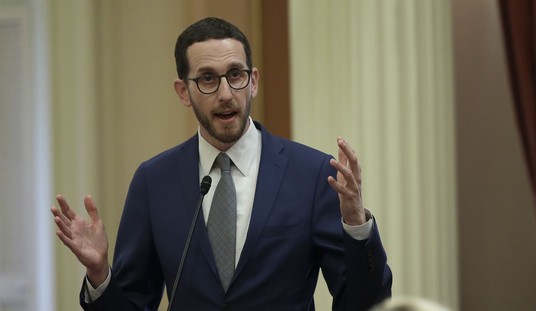Ed touched on this question yesterday but it deserves its own thread, as it’s one of the great mysteries of the post-vax stage of the pandemic. Why is Chile, which has one of the highest rates of vaccination on Earth, currently mired in a nasty wave of COVID? Only Israel, the UAE, and the UK have partially vaccinated a higher share of their population than Chile has and it’s paid off lavishly for two of those countries. Today the UK’s seven-day average in daily cases is the lowest it’s been since September:

Israel’s seven-day average is the lowest it’s been since June:

Chile’s seven-day average is, uhhhhhh:

They’re under a very strict lockdown right now, desperately trying to prevent hospitals from being overwhelmed.
To an anti-vaxxer, the data above is easily explained: The vaccines simply don’t work. Whatever’s driving down cases in Israel and Britain, it ain’t the jab. But that’s a hard argument to make at this stage of the game and getting harder. Both countries have seen their cases fall sharply despite the prevalence of the more contagious British variant in each. Meanwhile on the continent, which has also been overrun by the British variant, they’re headed back into national lockdowns to try to tamp down spiking case counts. The obvious difference in those outcomes is vaccination rates. In France, just 12 percent of the population has received its first dose. In the UK, 45.9 percent has.
There’s another difference between the two, namely that the UK has been in various stages of lockdown since cases skyrocketed over the winter. France had left lockdown before the current surge. It’s possible that Britain’s greater social restrictions have helped reduce cases there, but any anti-vaxxer who adopts that explanation is obviously stuck arguing on behalf of the efficacy of lockdowns.
Anyway, what about Chile? How do you dish out first doses to 34.4 percent of your population and still end up with a ferocious wave? Right now, scientists’ best guess is that the country opened up too early. After experiencing its first big wave last June, cases in Chile were flat for nearly six months. That encouraged the government to lift travel restrictions, especially since summer begins there in December. That looks to have been a mistake in hindsight:
The government moved too quickly as it reopened its borders in November and eased restrictions on businesses, said Dr. Crispi. In January, after tightly restricting the flow of people across provincial borders, the country created a permit system for Chileans to go on summer vacation.
“There was no control or traceability of the people who arrived in the country and many people traveled abroad on vacation,” Dr. Crispi said. She called the vacation permits a “seriously misguided measure.”
Soon, Chile also allowed gyms, churches, malls, restaurants and casinos to reopen. Even as experts urged caution, the government stuck to its plan to reopen schools on March 1.
Cases had already begun to rise in late December, possibly as people moved about more in anticipation of restrictions lifting, but they really took off in February after international travel was under way.
Relatedly, it may be that all of the travel abroad helped bring back some of the highly contagious variants being tracked by scientists, including the one from Chile’s not-quite-neighbor Brazil that appears capable of reinfecting people who’ve already had COVID. Comparatively few cases of the British and Brazilian strains have been confirmed in Chile so far but (a) who knows how much sequencing of the virus is being done locally and (b) anecdotal reports from the country claim that recent COVID patients appear to have a more serious version of the disease than ones last year did.
Health care authorities say they have noticed a difference in the identity of those occupying ICU beds since the first wave of the pandemic: patients are younger and sicker.
“It seems to be more aggressive than last year. There are patients who go straight to ICU” and on oxygen, Hector Ugarte, chief doctor at the adult critical patient unit in a hospital in the coastal city Coquimbo, told AFP.
The ages of those needing hospital treatment has fallen “enormously,” said the ministry of health — because the young “haven’t been careful.”
The fact that patients are younger is easy to explain: Chile has prioritized older people for vaccination just like the U.S. has, so fewer senior citizens are falling ill. The fact that those younger patients are sicker is harder to account for. Is it a variant at work?
As for the pace of vaccinations, although Chile has ramped up quickly, this graph suggests they got a late start compared to Israel and the UK. If so, that would help explain why the epidemic curves in all three countries look different:

Britain’s and especially Israel’s vaccination efforts had already taken off by early February, before Chile’s got going. It may be that the Chileans were a bit too late with their rollout to stop the coming wave, with summer travel having seeded so much of the virus nationally by the time shots started going out that there was no way to prevent a spike. Plus, if relatively few Chileans had natural immunity due to the mild state of their pandemic between last June and December, that would also have left a lot of the population vulnerable to infection before the doses arrived to try to save them.
There’s one other factor which Ed mentioned yesterday. What if Chile’s using a bum vaccine? Ross Clark mentioned that today as well:
According to the Chilean Ministry of Finance, by 3 March the country had taken delivery of 10 million Sinovac doses and only 700,000 Pfizer doses.
Of all vaccines in use in the world, Sinovac is the one with the least impressive and most inconsistent results. A Brazilian study in January suggested that it had an efficacy rate in preventing symptomatic illness of 50.4 per cent, way below the 95 per cent reported for Pfizer and 76 per cent measured for AstraZeneca in its recent US trial.
They’re using a Chinese vaccine of questionable quality, although evidently one effective enough to have been endorsed by Beijing’s friends at the WHO. Chile should try to get hold of AstraZeneca, which is common in the UK. It seems to be working like a charm there.







Join the conversation as a VIP Member